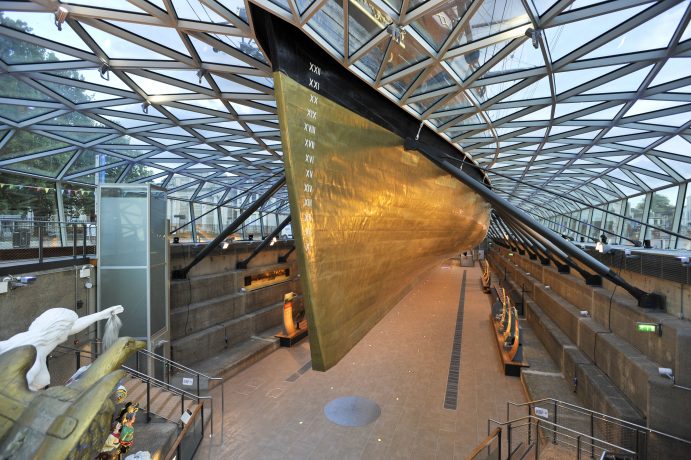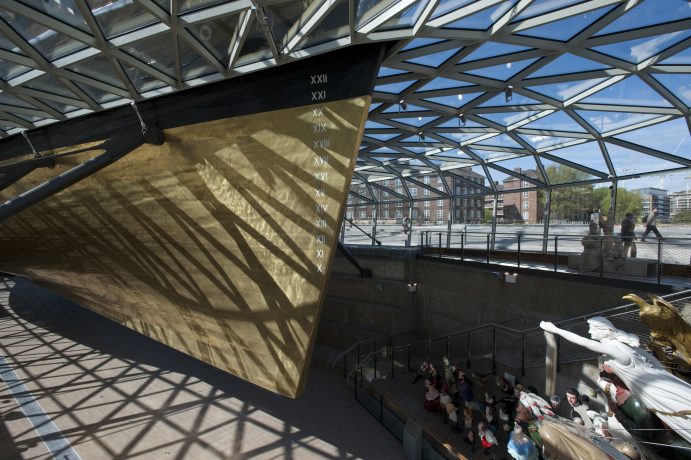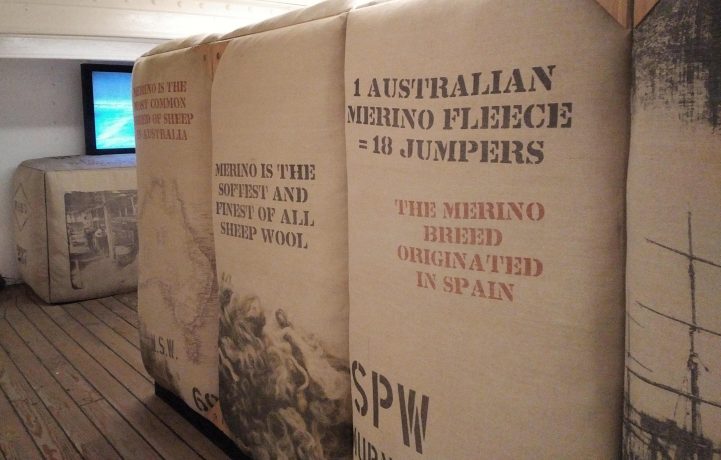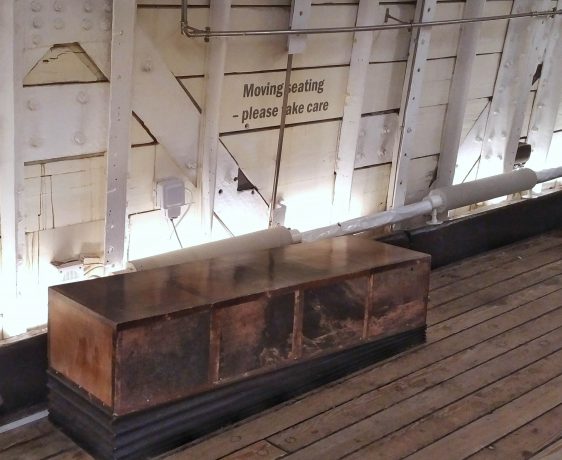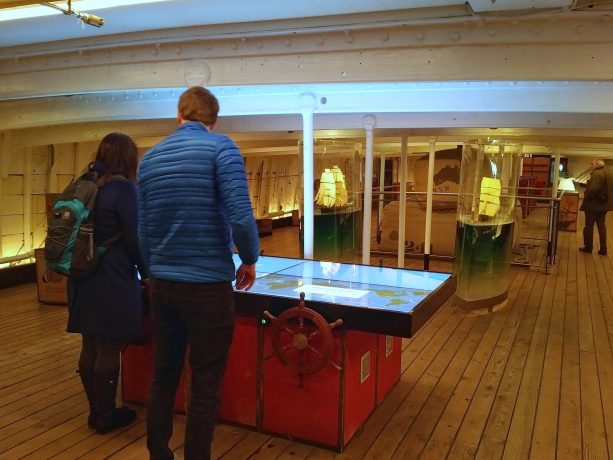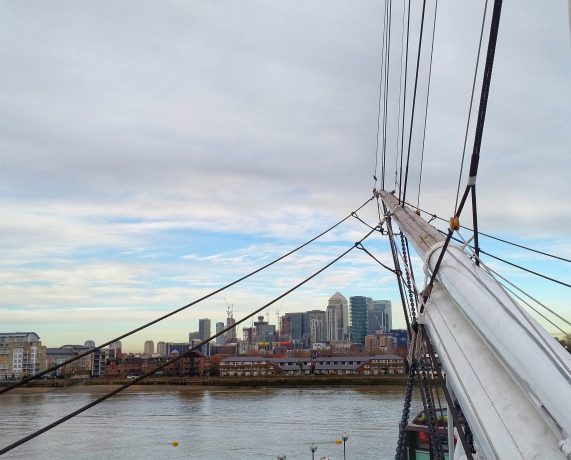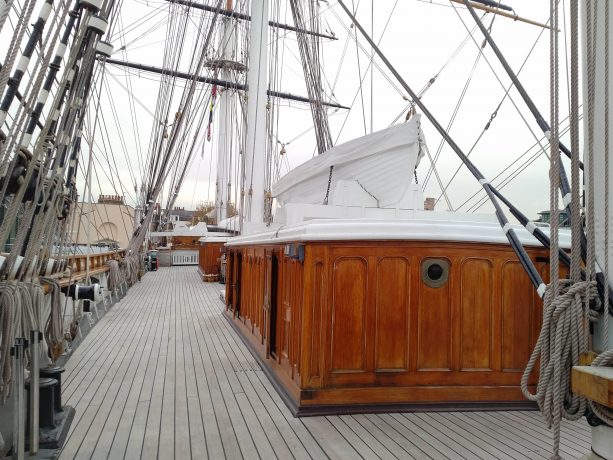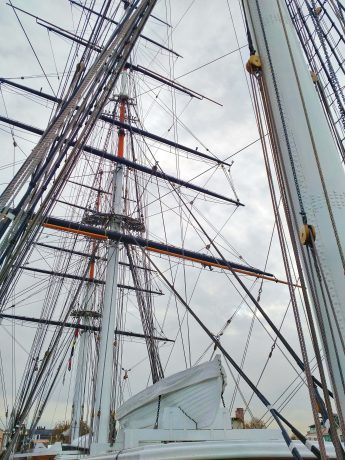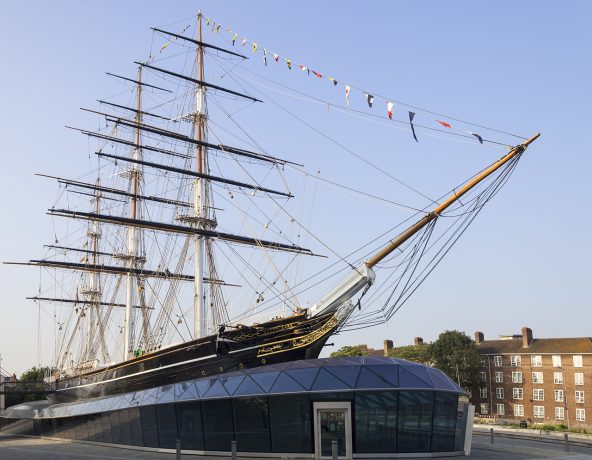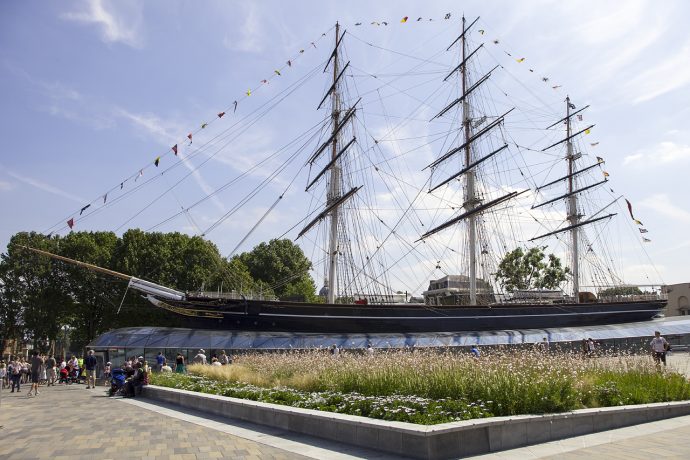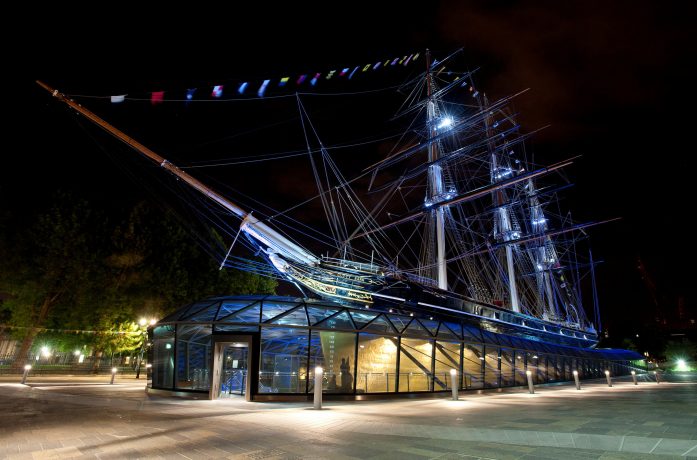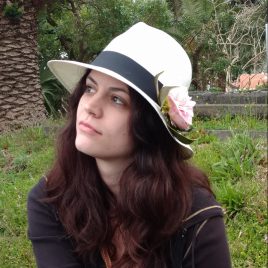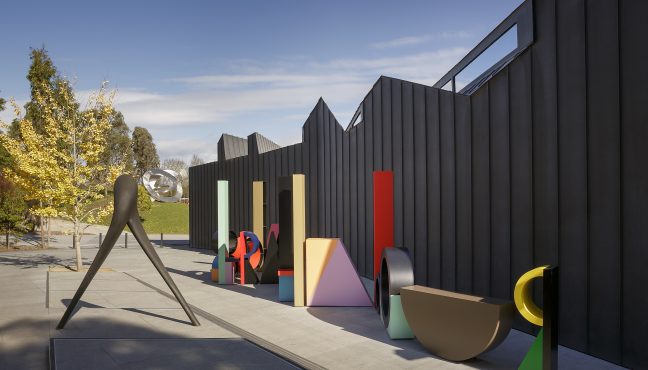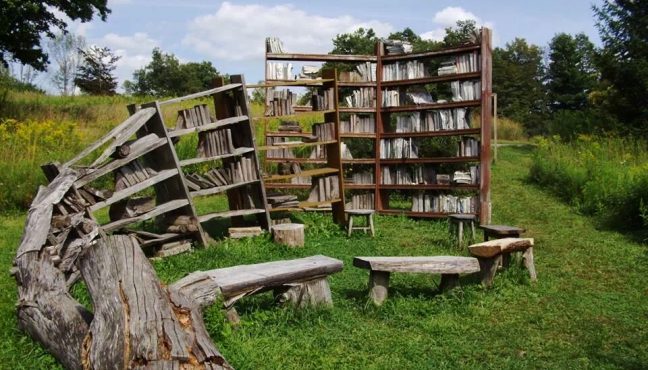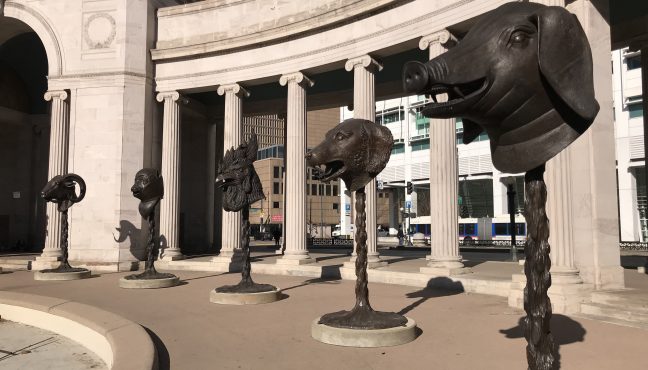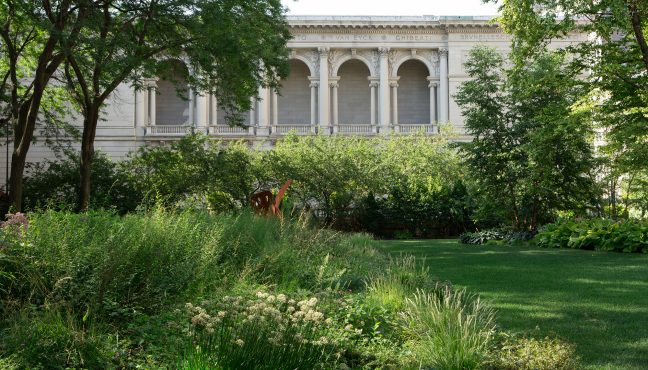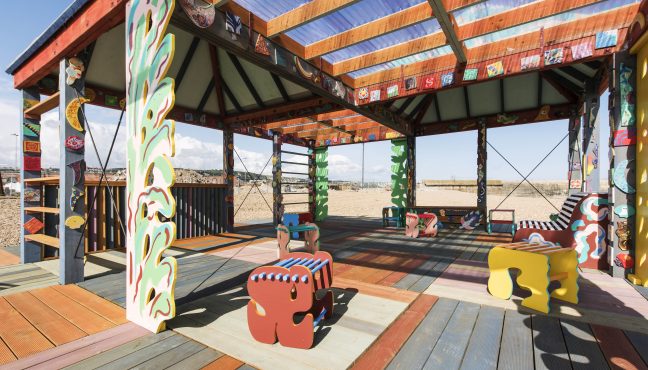One of the world’s most famous ships is dry-docked along the Thames. Cutty Sark rests in Greenwich – a museum that highlights the tea trade and British maritime history. It’s also one of the best open-air spaces to check out beautiful views of the London skyline.
Despite being a 963-ton ship on a street in Greenwich, this museum is sometimes overlooked as visitors head straight to its well-known neighbor, the National Maritime Museum. Cutty Sark hails its name from the Robert Burns poem, “Tam O’Shanter”. In the poem, a farmer named Tam encounters a coven of witches, one of which is named Nannie. She is beautiful and revealing in a cutty sark, a Scotch word for a short dress or nightgown. The ship’s figurehead depicts Nannie, although it is unclear why the ship’s founder John Willis chose this character to represent the ship.
Although it was constructed in Scotland, Cutty Sark’s maiden voyage left from London and sailed to Shanghai. On the voyage she carried “large amounts of wine, spirits, and beer” and returned from Shanghai laden with tea.
The visit begins inside the visitor center and gift shop. Just downstairs they also have a café that offers small treats and an afternoon tea service. The view below allows for a look at the hull and additional information about cultural curiosities that were inspired by the Cutty Sark, including the well-known whiskey brand. Make sure you go here after exploring the ship, if not for the coffee and pastries, then definitely to see the collection of ship figureheads. According to Royal Museums Greenwich, this is the world’s largest collection of those wooden figures that adorn ships’ prows and it is all “thanks to a bequest by an eccentric maritime history lover.”
 Photo: Nicole Famiglietti
Photo: Nicole FamigliettiThe museum’s first floor takes you to the cargo hold. The ship was built with iron frames, wooden planks and brass sheathing to provide the most efficient space to carry tea. Inside the cargo hold, the exhibition designers also effectively utilize what may at first seem like a limiting space. However, reproduction tea crates (the likes of which the ship was meant to hold) are strategically placed to illustrate the history of the demand for tea in Britain and how this fueled international maritime trade. Cutty Sark made eight tea voyages carrying around 600,000 kg of tea each time, this is roughly 300 million cups of tea!
 Photo: Nicole Famiglietti
Photo: Nicole Famiglietti Photo: Nicole Famiglietti
Photo: Nicole FamigliettiThe cargo hold also features the Cutty Sark Studio Theatre. According to the museum, this is the only theater located on an historic ship anywhere in the world. The short film provides a glimpse into the rise of the tea trade and the life of the ship. The theater also regularly hosts musical and comedy performances if you come for a special ticketed evening event.
 Photo: Nicole Famiglietti
Photo: Nicole FamigliettiDown below in the hold, you will discover more about the ship itself and life on board. There is a bench that sways back and forth rhythmically as in its glory days out on the open ocean. Touchtables and drawers invite you to interact with Cutty Sark’s route, the food, sounds and smells of the voyages. There are lots of hands-on activities that both kids and adults will enjoy. Take some time to discover sea life by practicing your knots or feel the grueling task of scrubbing the deck. There are also some very interesting artifacts on display in this section including a bell with a fun history of being repeatedly stolen by rival sailors.
The deck, however, is the highlight of any visit to the Cutty Sark. On it, you can truly feel like you are out at sea and learn more about the daily lives of those on board. Although it is certainly not the tallest view of the city, nothing beats standing at the helm of the ship to gaze across the Thames and out at London’s metropolis. Spend a moment to breathe on deck and you can begin to understand how any sailor braved stormy waters, tight living quarters and meager meals.
Various storytelling methods are employed that engage all of the senses. While quietly walking around, you may notice the faint noises of pigs and chickens. Upon closer inspection, two separate areas show where these animals lived on board. The area was small and dark, but there were figures to represent the animals and the soft sounds are the only things that bring attention to it. By engaging your ears, the interpretive methods at Cutty Sark motivate you to take a harder look at all of the surroundings.
 Photo: Nicole Famiglietti
Photo: Nicole FamigliettiYou also have the opportunity to hear from the sailors who braved the open seas on this tea clipper. From the deck, enter and walk around the captain’s quarters. Compared to the crew’s living quarters, this seems positively palatial, but moving around in the small space, you get a better feel for the deliberate layout and choice of furnishings. From another point on deck, you can peek inside a small room. Here, a man is digitally projected and talks about his days at sea, presumably excerpts from letters written by past sailors.
Cutty Sark offers a unique museum experience. By using the ship itself to chronicle the rise of the tea trade in Britain and ever-improving technologies for transport, the visitor gains a sense of place. Although the artifacts are interesting, the real value of this museum experience lies in its ability to engage all of your senses. The interactives that invite you to touch, smell and listen add a new layer to a non-typical museum visit. Taking a moment to enjoy the fresh air and view on deck gives one time to reflect on what the ship really represents. There is a bit of irony in taking a quiet still moment to appreciate what once was the fastest ship of her time. As a clipper, the ship symbolizes speed, global trade and the rise of ever-improving technologies to fuel consumer demand. As a museum, it serves as an entertaining experience to discover British maritime trade.

